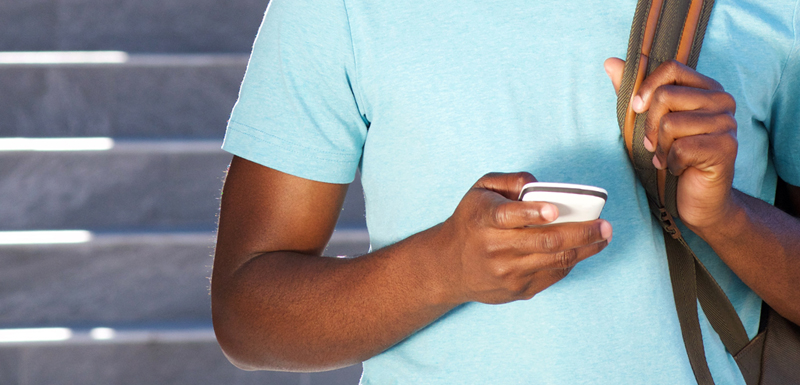Mobile Ordering and its Impact on Design

If you’ve eaten at a quick-serve restaurant or even grabbed a cup of coffee recently, you’re probably aware of the revolution in mobile ordering. On the surface, it’s all about convenience – no waiting in line to order, waiting to pay, waiting for food; it’s ready when you are. But mobile ordering isn’t just about convenience. Today’s college students are looking for more variety and healthy choices in the food they eat. They are more likely to customize – often adding other seasonings and ingredients to pre-packaged food. Mobile ordering allows for a high degree of customization.
How about some spinach and avocado on that turkey sausage and parmesan breakfast sandwich? Not to mention, mobile apps allow users to save their preferences for future orders.
The mobile ordering craze offers the convenience to students to pre-plan what they want, and when they are going to pick it up. This offers more food choices, opens up options for hot food and drinks when short on time, and eliminates the need to stand in line to pay, wait for your food to be prepared and picked up.
Plan for Mobile Ordering
Queuing Area
Customers place either online, kiosk or in-person orders. Provide intuitive wayfinding, visible menu boards and space to avoid cramped conditions.
Serving Line
Flexibility and customizing of orders is key, with cold-/hot-hold provisions at pick up area.
How is mobile ordering effecting space design?
Customer Flow
While some may order from their phone, long before they arrive to pick it up, others – particularly those new to the concept – will place their order at a kiosk. And some will still prefer to place their order in person, at a point-of-sale, especially for cash purchases. What was once a linear flow (order, pay, pick-up) becomes less structured. The positioning of menus, kiosks, traditional point-of-sale and order pick-up needs to be logical, and wayfinding intuitive. Providing seating and other waiting spaces outside of this circulation reduces crowding. Above all, the space needs to be appropriately sized to comfortably accommodate all of this activity.
Staffing
While a fixed number of kiosks can tend to pace the rate of orders being placed, mobile orders don’t wait in line. This can lead to a slammed prep line quickly. On the other hand, with less staff needed to take orders and payment, this frees up resources to handle the volume of order prep. Overall, the number of staff may be similar – but with more people working on the production and prep side, careful consideration of the ergonomics and layout of the serving line is key. Limiting the distance staff need to move to keep orders flowing, with wider aisles at potential choke points, helps to ensure smooth and efficient operation to keep orders flowing and quality up.
Impact on the Back of House
On the serving line, proteins, grains, veggies, and toppings laid out in small cold and hot well pans allow for dishes to be assembled from a wide range of fresh ingredients. While efficiency is a driver here, it’s also about flexibility. Today’s students are much more adventurous, eager to try new things. The cook-line and prep-line must be able to adapt to a changing menu. With the ingredients on display, and showcasing the cooking and preparation, this communicates fresh, not-processed food. Then, once ready, hot-hold and chilled storage capacity for orders awaiting pickup is a key consideration in maintaining quality.
